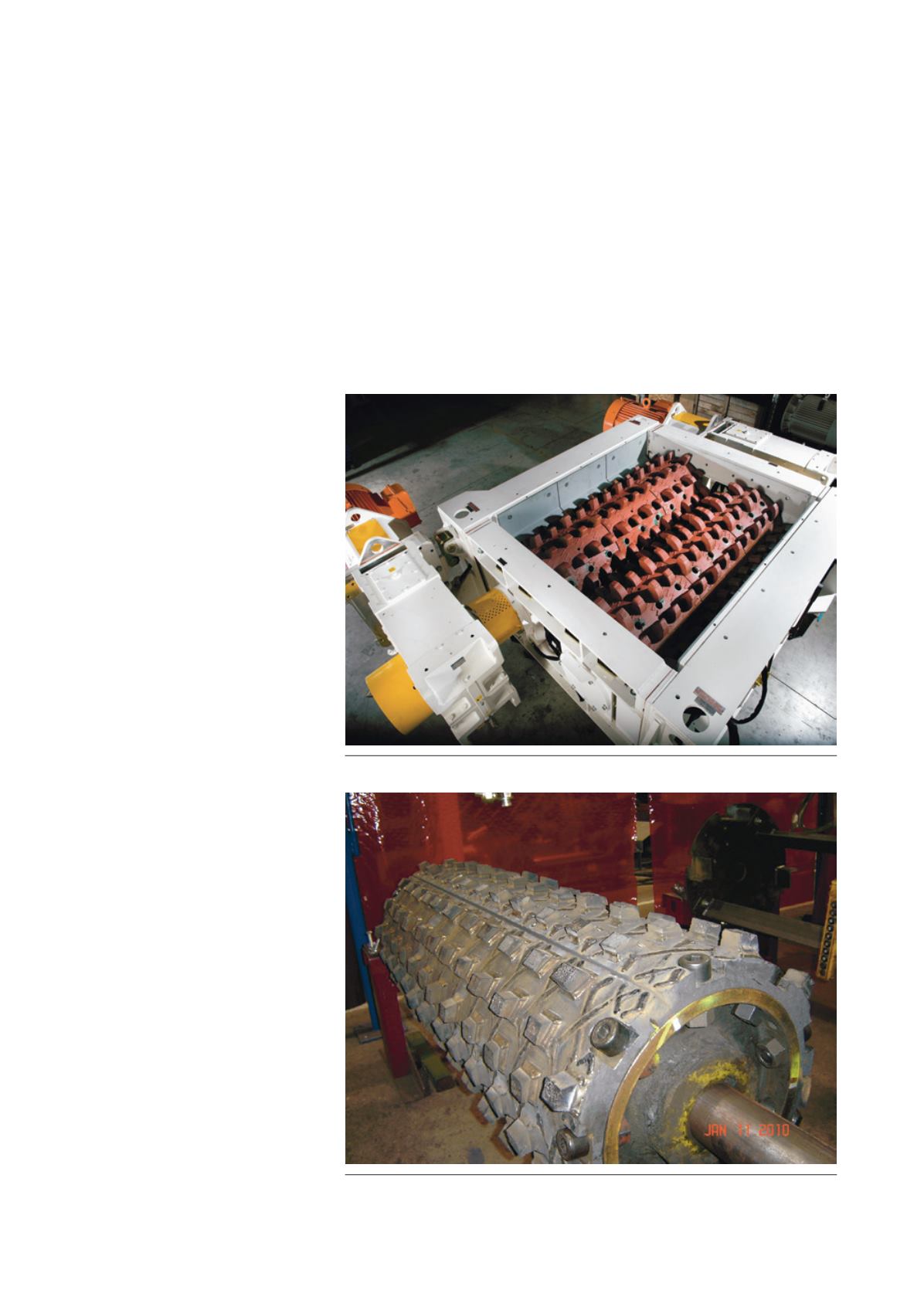
equipment – and in many applications,
there is more than one correct choice. A
crusher manufacturer should be
contacted to review the application
details and outline all of the available
options to provide a professional
recommendation for a specific mineral
processing project.
Case study: New Acland
Coal Mine
Following is a case study where a
thorough investigation of the
application led to proper selection and
design of McLanahan DDC‑Sizers,
resulting in improved operation and
production at the New Acland Coal
Mine in Australia. The mine, which is a
part of the New Hope Group, began
production in October 2002. Since that
time, it has expanded its operation and
production to the current point of
4.8 million tpy.
Challenge
Coal from New Acland comes from a
fine seam mine, so that material mined
in some seams can be as small as
100 mm or as large as 2 m. Many of the
2 m seams have a number of smaller
coal seams combined into one, which
means there are a lot of partings in
between. Those partings are high in
clay or even rock, which can make coal
very difficult to process.
To remove the clay and other
partings, New Acland needs to add a
lot of water when the coal goes
through the crushing stage. This can
cause many problems to equipment.
“The resource is very difficult to
process and one of the major problems
is the clay that’s in the coal and having
to add water at the crushing stage,
which leads to a lot of damage to the
seals, early failure of bearings and high
maintenance costs, low reliability and
trouble with availabilities in the plant,”
said Rob Rashleigh, Plant Manager at
New Acland Coal Mine.
In 2009, the site began an upgrade
to the wash plant and realised that the
existing tertiary sizer was creating a
bottleneck in potentially increasing
production through the plant. It was
during this expansion that the mine
began to look for alternatives to its
existing sizers that would remove the
bottleneck, as well as address the
issues of the seals and bearings.
NewAcland also kept in mind that it
would need a sizer to handle its very
hard coal. The site is different from
others in the coal industry in that the
final product size is 38 mm, whereas
most is 50 mm. To make sure the hard
coal is properly sized takes more energy
and wear resistance from a crusher.
Solutions
“When we first started to look at that
upgrade, we looked at a couple of
different companies that could meet our
requirements, particularly with the
bearing arrangement, the segments, and
also we wanted to make sure we didn’t
increase the fines in the coal as well,”
said Rashleigh. “So we looked at a
couple of different companies through
that stage and were introduced to
McLanahan.”
Since McLanahan provides
custom‑engineered process solutions, it
didn’t suggest a one-size-fits-all solution
for NewAcland. Instead, McLanahan
worked to combine elements from
Figure 4. DDC-Sizer for the Australian coal market.
Figure 5. McLanahan roll featuring weld-on carbide impregnated tooth design.
July 2015
|
World Coal
|
41


